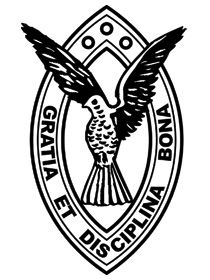
Columba was an Irish abbot and missionary evangelist credited with spreading Christianity in what is today Scotland at the start of the Hiberno-Scottish mission. He founded the important abbey on Iona, which became a dominant religious and political institution in the region for centuries. He is the patron saint of Derry. He was highly regarded by both the Gaels of Dál Riata and the Picts, and is remembered today as a Catholic saint and one of the Twelve Apostles of Ireland. In Ireland, he is commonly known as Colmcille.
In Greek mythology, Agelasta was the name of the stone on which Demeter rested during her search for Persephone.

Columba is a faint constellation created in the late sixteenth century, remaining in official use, with its rigid limits set in the 20th century. Its name is Latin for dove. It takes up 1.31% of the southern celestial hemisphere and is just south of Canis Major and Lepus.

The large bird genus Columba comprises a group of medium to large stout-bodied pigeons, often referred to as the typical pigeons. The terms "dove" and "pigeon" are used indiscriminately for smaller and larger Columbidae, respectively. Columba species – at least those of Columba sensu stricto – are generally termed "pigeons", and in many cases wood-pigeons. The species commonly referred to just as "the pigeon" is the feral pigeon. It is derived from the rock dove, which also has given rise to the majority of domesticated pigeon breeds, such as the racing pigeon and the fantail pigeon. Meanwhile, "wood pigeon" by itself usually means the common wood pigeon.
Adomnán or Adamnán of Iona, also known as Eunan, was an abbot of Iona Abbey (r. 679–704), hagiographer, statesman, canon jurist, and saint. He was the author of the book on the life of his cousin St Columba, the Vita, probably written between 697 and 700. The biography is by far the most important surviving work written in early medieval Scotland, and is a vital source for our knowledge of the Picts, and an insight into the life of Iona and the early medieval Gaelic monk.

Columba College is an integrated Presbyterian school in Roslyn, Dunedin, New Zealand. The roll is made up of pupils of all ages. The majority of pupils are in the girls secondary, day and boarding school, but there is also a primary school consisting of boys and girls in years 1-6.

Hinba is an island in Scotland of uncertain location that was the site of a small monastery associated with the Columban church on Iona. Although a number of details are known about the monastery and its early abbots, and various anecdotes dating from the time of Columba of a mystical nature have survived, modern scholars are divided as to its whereabouts. The source of information about the island is Adomnán's late 7th-century Vita Columbae.

MV Hebridean Princess is a cruise ship operated by Hebridean Island Cruises. She started life as the MacBrayne car ferry and Royal Mail Ship, initially RMS then MV Columba, based in Oban for the first 25 years of her life, carrying up to 600 passengers, and 50 cars, between the Scottish islands.
The Church of St. Columba is a Roman Catholic parish church under the authority of the Roman Catholic Archdiocese of New York, located in Hopewell Junction, Dutchess County, New York State.
Columba McVeigh was a youth from Northern Ireland who was abducted and murdered by the Provisional Irish Republican Army (IRA). He was listed as one of the "Disappeared" by the Independent Commission for the Location of Victims' Remains.

Mesosini is a tribe of longhorn beetles of the subfamily Lamiinae.
Agelasta is a genus of longhorn beetles of the subfamily Lamiinae.
Agelasta pardalina is a species of beetle in the family Cerambycidae. It was described by Heller in 1924. It is known from the Philippines.
Agelasta andamanica is a species of beetle in the family Cerambycidae. It was described by Stephan von Breuning in 1935. It is known from the Andaman Islands.
Agelasta catenata is a species of beetle in the family Cerambycidae. It was described by Francis Polkinghorne Pascoe in 1862. It is known from Malaysia, Cambodia, Laos, Borneo and Vietnam. It contains the varietas Agelasta catenata var. infasciata.
Agelasta balteata is a species of beetle in the family Cerambycidae. It was described by Francis Polkinghorne Pascoe in 1866. It is known from Malaysia, Java, and Sumatra. It contains the varietas Agelasta balteata var. niasica.
Agelasta tonkinea is a species of beetle in the family Cerambycidae. It was described by Pic in 1925.
Agelasta konoi is a species of beetle in the family Cerambycidae. It was described by Masao Hayashi in 1956.
Agelasta yonaguni is a species of beetle in the family Cerambycidae. It was described by Masao Hayashi in 1962. It is known from Japan.
Agelasta obscura is a species of beetle in the family Cerambycidae. It was described by McLeay in 1884.






